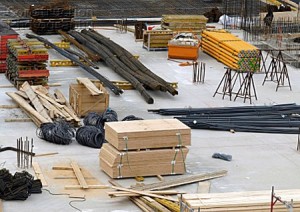 Building a new home can be an exciting and daunting task. The dreaming, planning, and decision making that goes into designing your home can be stressful and emotionally trying, but knowing you made all the right decisions can be incredibly satisfying. At Global Restoration, we want to make the planning and decision-making process less stressful for you. We’ve listed the three most common house building materials as well as the benefits and drawbacks of each.
Building a new home can be an exciting and daunting task. The dreaming, planning, and decision making that goes into designing your home can be stressful and emotionally trying, but knowing you made all the right decisions can be incredibly satisfying. At Global Restoration, we want to make the planning and decision-making process less stressful for you. We’ve listed the three most common house building materials as well as the benefits and drawbacks of each.
1 – Wood
Perhaps the oldest construction material on earth, wood has been used to make everything from crude lean-tos to elaborate manors. There are many different species of wood, each with a different color and texture.
The benefits of wood include the following:
- It is plentiful. Trees can be found on almost every continent and in most regions of the world.
- Wood can be relatively inexpensive. Some species can be costly, depending upon quality and scarcity, but buying local species of wood or using wood procured from your own land is usually quite affordable.
- It is easy to work with and can be cut, sawed, carved, and otherwise handled with common tools and little effort when compared to other materials.
The drawbacks of wood include the following:
- It is susceptible to rot, decay, and pest damage. If your home is not sealed and painted, eventually the elements will cause severe damage — often sooner, rather than later.
- Not as sturdy as other options like brick, stone, and other common building materials wood is more at risk for fire. Even the strongest and fire resistant of wood species can still burn.
- Wood is not an effective insulator. Both brick and stone are better insulators of heat and sound.
2 – Stone
One of the oldest building materials known to man, stone has been used to build effigies that have stood for thousands of years. The finest and most elaborate cathedrals and monuments of the world are mostly built from stone, a testament to its strength and durability.
The benefits of stone are as follows:
- It is one of the most long-lasting materials on earth, resistant to fire as well as most other elemental damage.
- Stone, like wood, is very plentiful and is found in a remarkable assortment of sizes, shapes, colors, and textures.
Stone comes with the following drawbacks:
- It can be very expensive. High quality labor and high quality materials can cost a great deal to procure.
- Using stone can be cumbersome. Stone is a heavy building material and cutting or shaping stone is a difficult and time-consuming task.
3 – Brick
The first bricks were simply blocks of mud hardened in the sunshine, and those proved quite effective as construction materials for thousands of years. Modern bricks are made through a more intensive procedure that makes them strong and durable.
The benefits of brick include the following:
- Brick homes are solid and less susceptible to rot or decay than other materials. Brick does not burn, which makes an attractive safety feature.
- A good insulator, brick can help control heating and cooling costs and can muffle outdoor noises.
- Bricks come in a wide variety of shapes, colors, and textures.
- Choosing brick can result in lower insurance rates.
Drawbacks for brick include the following:
- Often, a brick home may have a timber frame that can collapse when exposed to fire.
- If the mortar between bricks is damaged, the integrity of the home is at risk. In earthquake-prone areas, cracked mortar can cause the home to fall in some cases.
For advice on choosing the best material for your next home, contact the experts at Global Restoration today.
